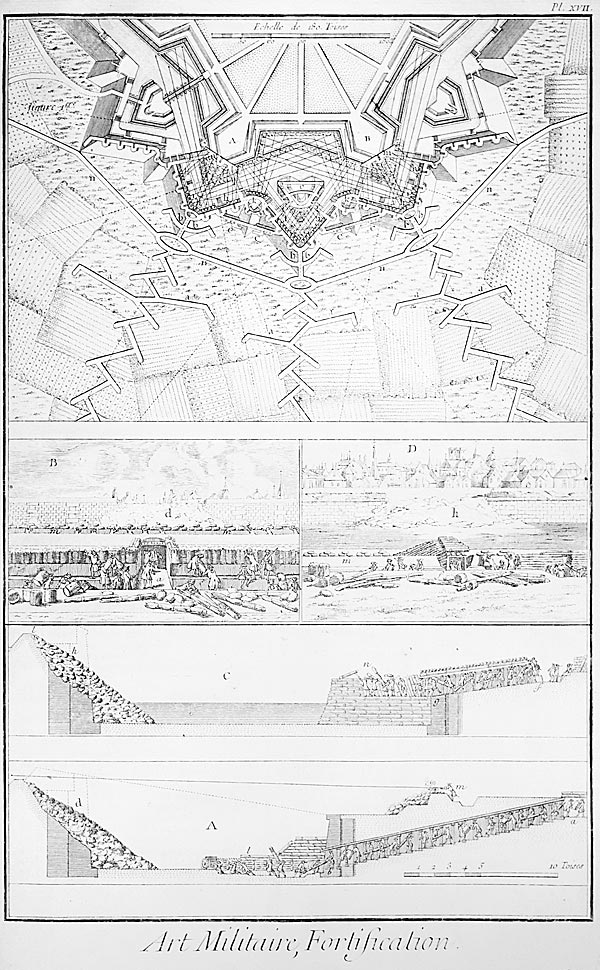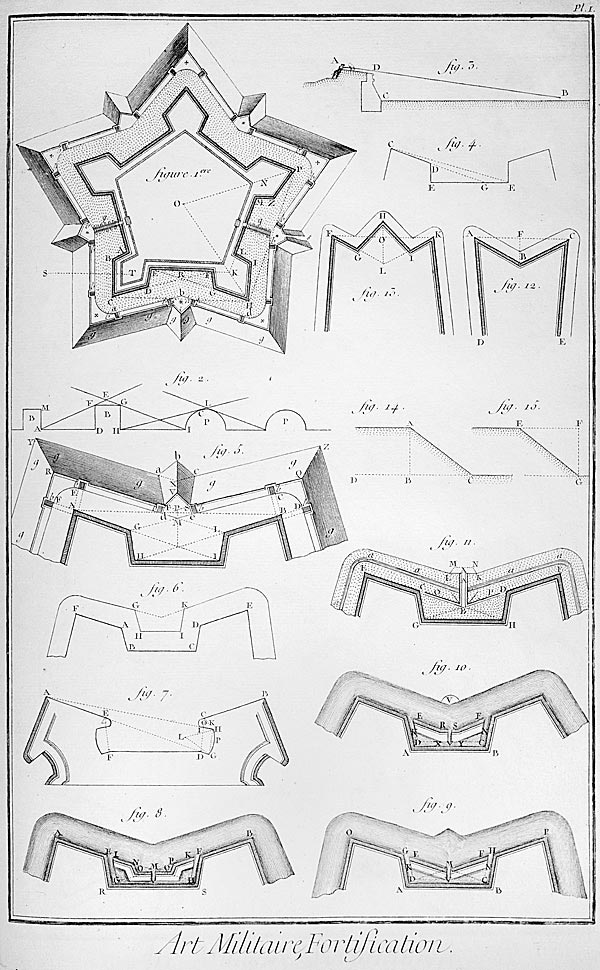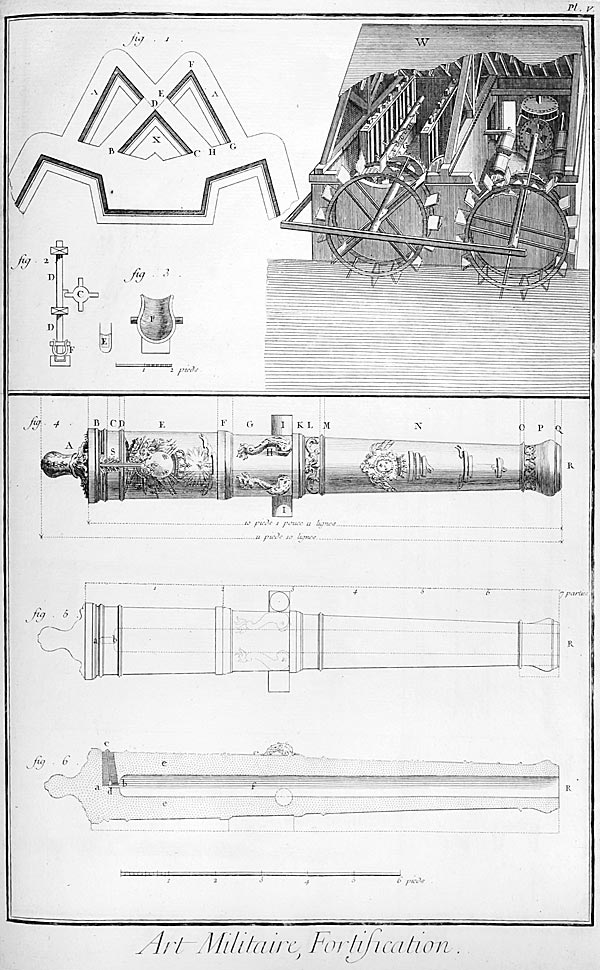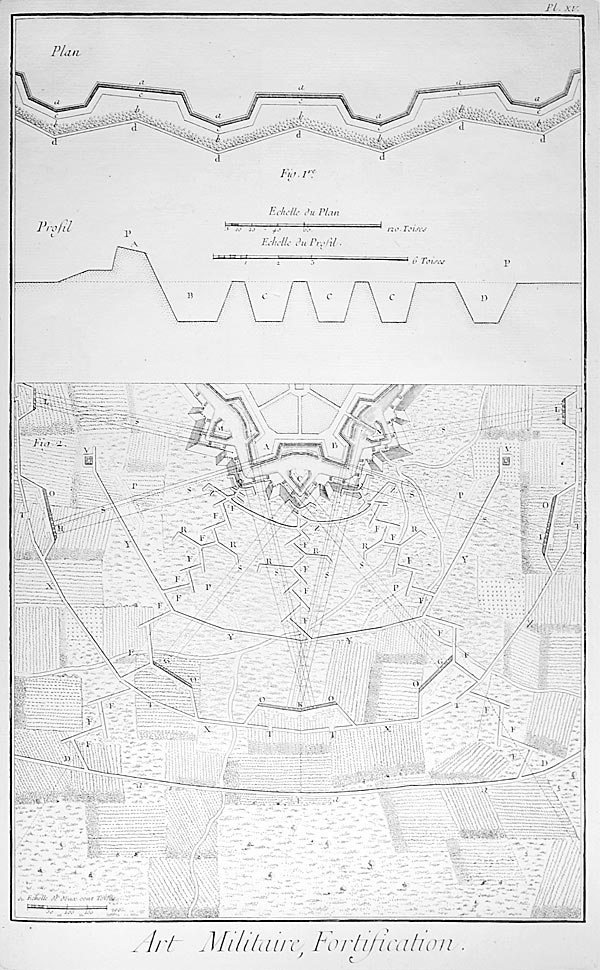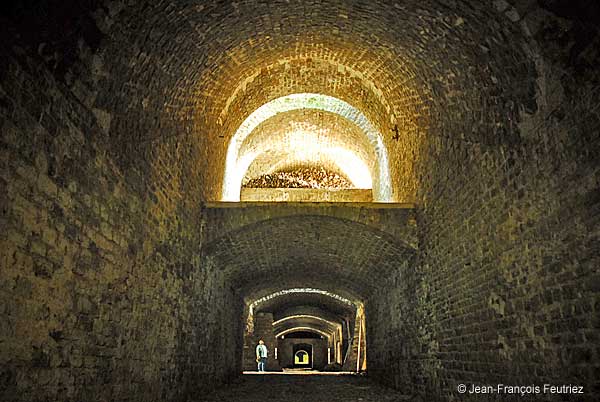In the Shelter of Fortifications
"FORTIFICATION, or the ART OF FORTIFYING, consists of readying a place, or any location that one wishes to defend, to be able to withstand, with few people, the efforts of an enemy greater in number of troops, when under siege. The structures built for this purpose are called fortifications; these are our bastions, ravelins, hornworks, etc."
Denis Diderot
The military arts are featured in the Encyclopaedia, with illustrations dedicated to fortifications, artillery, pyrotechnics, and the development and exercises of the infantry and cavalry...
In Langres, following the construction of the military citadel in 1842, the perimeter of protection was extended in front of the body of the fortification, with the construction of the Peigney and la Bonnelle forts. In response to new need for protection, Langres' fortifications were completed by a second belt of detached forts and batteries, which were put into place between 1874 and 1885. The belt was organised, by Raymond Séré de Rivières, around forts set up a dozen kilometres ahead of the body of fortification: Saint-Menge, Dampierre, la Pointe de Diamant, Plesnoy, Montlandon and Cognelot.
These defensive structures were intended to give complete control over the Langres plateau, to cover the important rail hub in Chalindrey, as well as the outlets leading to the Marne, Aube and Meuse basins.
Open to visitors, the forts of Cognelot in Chalindrey, and la Pointe de Diamant in Saint-Ciergues, have stood the test of time, undamaged, and provide an insight into fortification during the 19th Century.
